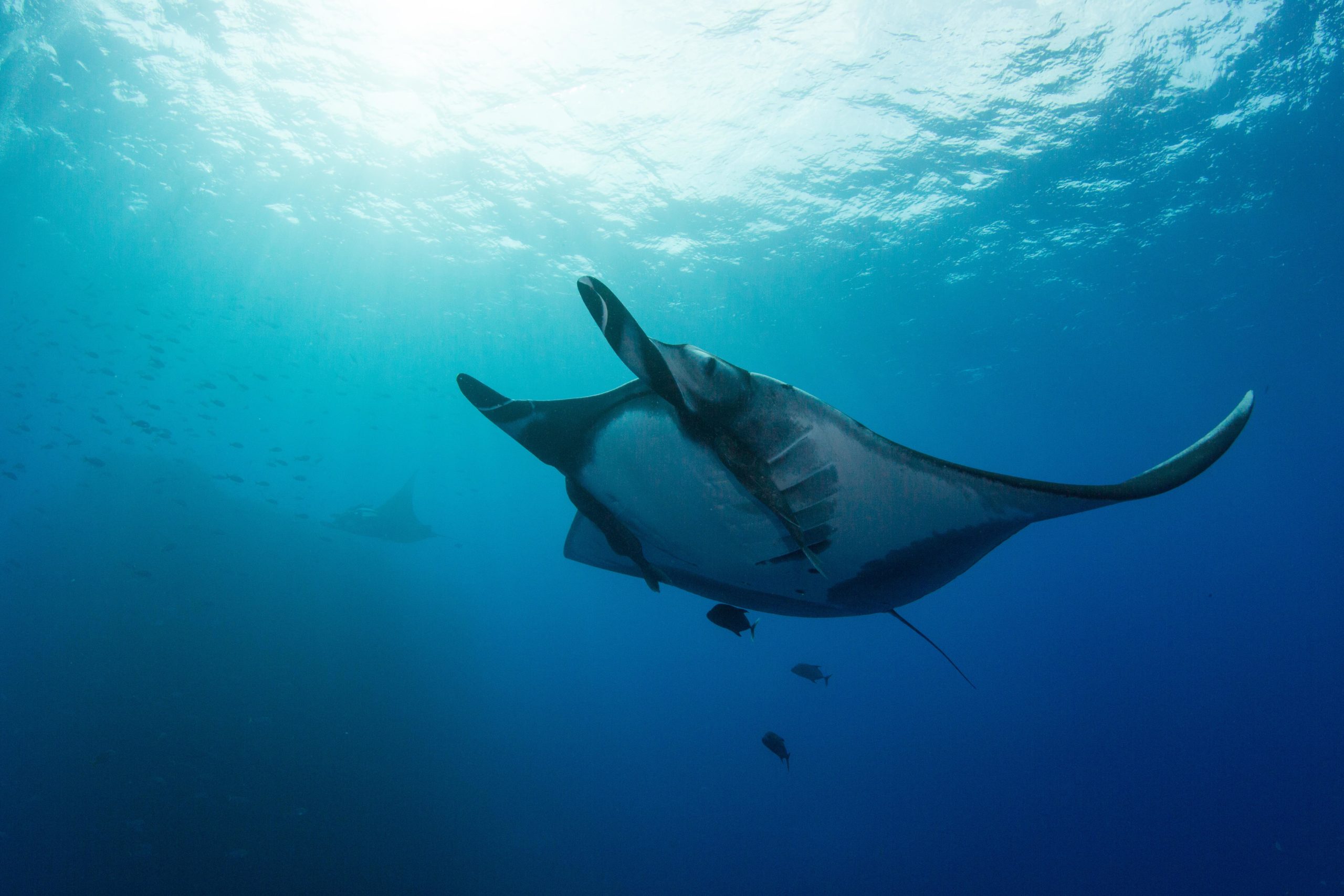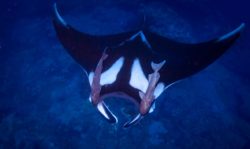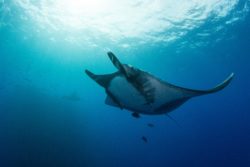
A Tale of Best Buds: Manta Rays and Remoras
You already know barnacles hitchhike on whales, but how much do you know about the symbiotic relationship between remoras and manta rays?
To start, what are these animals? Manta rays are cartilaginous fish (their skeletons made of cartilage like our ears and noses) that can reach wingspans of up to 25 feet and weigh as much as 5,000 pounds! Manta rays don’t have many natural predators and spend their days gliding through the ocean and filter feeding. Remoras are eight species of small marine fish that are sometimes called suckerfish or sharksuckers. Over time, they developed flatter, front-facing dorsal fins that act as suction cups, allowing them to attach themselves to manta rays, sharks, and other large marine vertebrates.

Manta ray and remoras in Flower Garden Banks National Marine Sanctuary. Photo: Beata Lerman
Mantas and remoras have what biologists call a mutualistic relationship, meaning both animals benefit from each other. In this case, remoras cling to the manta ray’s body (often on the underside, but sometimes on its dorsal side) for protection, easy transportation, and feeds when the manta ray glides into plankton-rich waters. Luckily, manta rays are messy eaters (you would be too if your mouth was wide open all the time!) and leave behind trails of food scraps that the remora can also benefit from. The remora’s ability to suction causes no harm to the manta rays and doesn’t even make lasting changes to their skin tissue.
In return, the manta ray gets a personal spa treatment from the remoras attached to it as they clean the manta’s skin of bacteria and parasites, which keeps their host healthy. Without the remoras, manta rays would likely have to stop at coral reefs more frequently to have scavengers like shrimp and even smaller fish clean their skin instead. Some studies investigate whether remoras slow down their hosts due to increased drag, but it appears the remoras’ streamlined bodies evolved to make sure they are successful hitchhikers that don’t place extra energy demands on their hosts.
Amazing, cooperative relationships between species exist throughout the animal kingdom and especially the ocean. Besides whales and barnacles and manta rays and remoras, what kinds of partnerships can you think of?

Manta ray and remoras. Photo: Joshua Stewart
